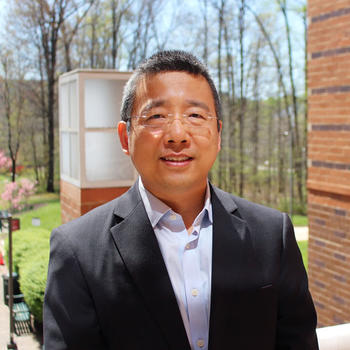A Mason professor finds yet another example of the value of diversity in senior management teams.
In order to innovate, companies have to play the long game. Cycles of R&D experimentation, iteration and market-testing require patience and a certain amount of risk-tolerance. For boards attempting to push an innovation imperative, this is a serious governance challenge, given the short-term mindset most CEOs are prone to—or forced into by the incentives of the role.

As Lei Gao, associate professor of finance at George Mason University School of Business, explains, “There are quarterly goals for financial performance, and if the company cannot beat or at least meet them, the market will punish them a lot. The CEO might get fired, or have their compensation package reduced.” This incentive structure inherently promotes short-termism, as opposed to the sustained focus required for big-picture innovation.
Gao co-wrote (with Christine X. Jiang of Fudan University and Mohamed Mekhaimer of St. John Fisher University) a recently published paper that points to a surprising solution. He finds that companies with a larger-than-average age difference between the CEO and other C-suite executives were more innovative on the whole, meaning not only that they applied for and registered more patents, but also that their patents received more citations.
This study looks at S&P 1500 firms for the period 1992-2016. The researchers gathered C-suite execs’ age, compensation and other relevant information from the S&P ExecuComp database. Gao surmises that this effect stems not from the subordinate executives’ relative youth itself but the longer-term mindset (or “horizon”) with which youth is associated. Because younger executives have a longer career ahead of them, they have the ability—or the luxury—to be patient about when investments will pay off. Thus, they are better able to counter CEOs’ orientation towards more immediate outcomes (e.g. financial performance and share price). In official business parlance, that means they can effectively exercise “internal governance”.
Compared to the external governance or monitoring performed by regulators, financial analysts and other third parties, internal governance is about reducing costly conflicts of interest between shareholders and management. The board of directors is chiefly responsible for this, but the quality of its governance may suffer when directors are remote from the everyday activities of management.
“Independent directors, for example, don’t know the business very well. They have less conflict of interest but are not always capable,” Gao says. “Subordinate managers run the company day to day. They have enough stake in the future of the company. They have incentive and capability; they don’t need to be educated. They should serve as better internal monitors to make sure CEOs are doing the right thing.”
However, certain contexts and relationships were more conducive to internal monitoring than others, as Gao and his co-authors discovered upon taking a closer look at their results. For example, the horizon difference between the CEO and the highest-paid non-CEO executive plays an especially significant role for innovation. In contrast, the CEO-CFO horizon difference, taken in isolation, is insignificant, presenting an exception to the rule. This may be because CFOs are very rarely appointed CEO later in their career, which may curtail their long-term aspirations (and thus their strategic priorities). Therefore, if companies wish to reap innovation capital from C-suite horizon differences, they should keep power and influence top of mind.
Additionally, the innovation-enhancing effects of internal monitoring disappeared completely for the oldest quartile of firms in the sample, suggesting that very mature organizations may be too set in their ways to benefit from C-suite age differences. Specialist CEOs, as opposed to generalists, were also immune to the influence of age difference, perhaps because they were less reliant on subordinate executives for opinion and advice on technology-related issues.
Gao suggests top management teams should be well-balanced in terms of aspiration and mindset, in addition to possessing complementary skills and professional experience. “Our story is compatible with the extensive research literature on the advantages of diversity…You need people with a longer horizon, but also enough power that they make an impact. When the board designs the corporate governance structure, this should be a factor that they consider.”
- April 18, 2024
- April 16, 2024
- April 10, 2024
- April 5, 2024
- April 3, 2024
